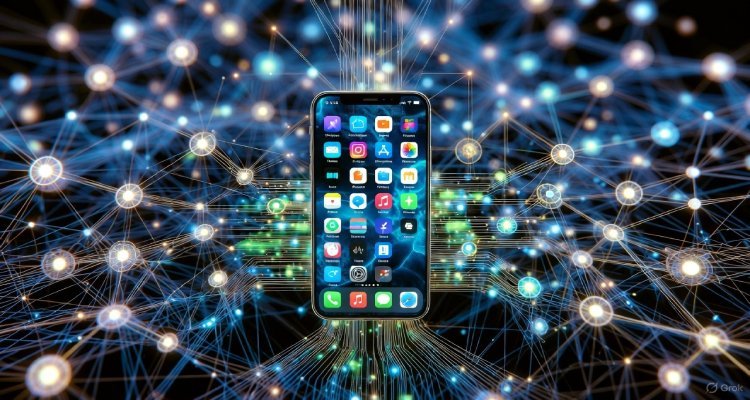The Sound You Hear When Data Is Deleted
A deep dive into the invisible side of digital erasure—what really happens when data is deleted, and how humanity’s quest for silence in the digital realm reveals the paradox of memory and forgetting in the age of information.
Introduction: The Silence After the Click
It happens in less than a second. A click, a swish, maybe a soft mechanical hum from a hard drive—then nothing. You’ve deleted a file. But behind that silence lies a profound question that technologists, philosophers, and data scientists continue to explore: What is the sound of deletion in the digital age? The phenomenon of “erasure” has become more psychological than mechanical, blending technology with memory, loss, and control in a world swimming in infinite data.
Context & Background: The Myth of True Deletion
When personal computers first arrived, deleting data was simple—select, remove, empty the trash, and it was gone. But modern systems work differently. Data rarely disappears instantly. Instead, it’s marked as “free space,” waiting to be overwritten by something new. Until then, remnants linger—digital ghosts on magnetic drives, flash memory, or cloud servers scattered across continents.
Data recovery specialists, cybersecurity experts, and even forensic investigators have long exploited this in-between state. Deleted data often outlives the intention to erase it, defying human expectations of forgetfulness. In a time when cloud servers mirror our lives, “deletion” has become an act of faith rather than a guarantee.
Main Developments: Digital Erasure and Its Hidden Echoes
In 2025, digital data is the lifeblood of everything from smart cities to personal AI assistants. But as much as humans seek permanence in storage, they also crave control over disappearance. The “right to be forgotten,” enshrined in European law, shows the growing social demand to silence digital traces. Yet implementing true deletion remains a technical paradox.
Researchers at MIT’s Media Lab recently explored a curious concept: the acoustic footprint of deletion. While not literally audible, their visualization experiments translate binary purges into sound frequencies representing data entropy—a way to make digital disappearance “perceivable.” It’s art meeting science: an attempt to find the hidden rhythm of forgetting.
Cloud infrastructure companies, meanwhile, face increasing regulatory pressure to ensure secure removal of user data. AWS, Google Cloud, and Microsoft Azure each claim compliance with international standards for data destruction. But the scale of modern data ecosystems—mirrored backups, redundant storage, AI training datasets—means deletion often means reclassification rather than obliteration.
Expert Insight and Public Reaction
“Nothing on the internet ever truly dies,” says Dr. Leena Sarkar, a cybersecurity researcher at the Indian Institute of Technology, Delhi. “We can delete accessibility, but the essence of data—the binary structure—lingers until overwritten. The sound of deletion is not silence; it’s latency.”
Digital artist Caleb Morano agrees but takes a more poetic stance. “When I create interactive artworks from server logs and deletion logs, I’m capturing the final heartbeat of data. There’s beauty in that moment—the transformation from signal to silence.”
Public sentiment has also shifted. As data breaches and AI learning models consume private information, users increasingly see deletion as an act of resistance. For many, pressing ‘delete’ feels symbolic—a reclaiming of personal agency in a networked world that remembers everything.
Impact and Implications: Who Really Controls Forgetting?
The implications stretch far beyond user privacy. In the age of generative AI, deleted data may still exist as derivative knowledge within algorithmic models. This presents ethical questions about consent, permanence, and ownership. Can a machine “forget” data that helped it learn?
Recent debates within the United Nations’ Digital Rights Council have centered on the notion of algorithmic amnesia—developing AI that can “unlearn” specific datasets. While promising, such solutions remain technically complex and computationally expensive.
For governments and corporations alike, deletion is no longer a mechanical process but a moral one. The sound of deletion—silent yet profound—marks civilization’s delicate balance between remembrance and oblivion.
Conclusion: The Resonance of Forgetting
In the end, the sound of data deletion may not be a literal noise but a philosophical echo—a reminder that digital life mirrors human memory. Both are fragile, temporal, and selective. The illusion of silence after a click conceals layers of persistence and transformation.
Our digital era redefines forgetting as a process, not an instant. In the hum of servers and the whisper of code, we find that deletion isn’t absence—it’s transition. The world may never hear the sound of true deletion, but it will continue to chase it—one file, one byte, one memory at a time.
Disclaimer : This article is intended for informational and educational purposes. It does not provide professional cybersecurity or legal advice. Readers should consult certified professionals before making data management or privacy decisions.











